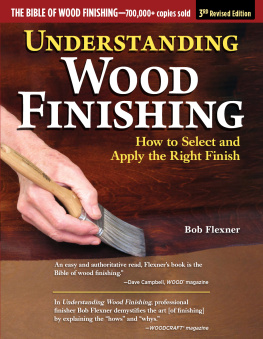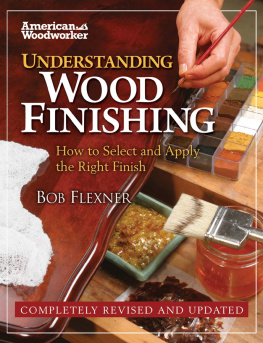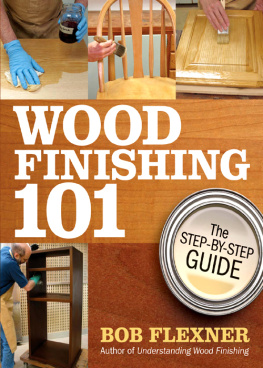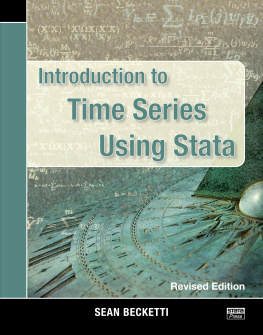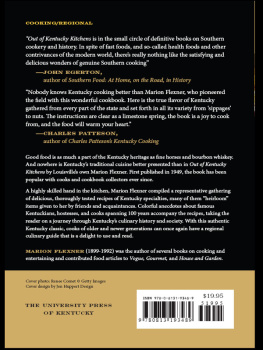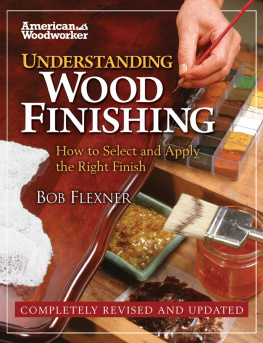Bob Flexner - Understanding Wood Finishing, 3rd Revised Edition
Here you can read online Bob Flexner - Understanding Wood Finishing, 3rd Revised Edition full text of the book (entire story) in english for free. Download pdf and epub, get meaning, cover and reviews about this ebook. publisher: Fox Chapel Publishing, genre: Home and family. Description of the work, (preface) as well as reviews are available. Best literature library LitArk.com created for fans of good reading and offers a wide selection of genres:
Romance novel
Science fiction
Adventure
Detective
Science
History
Home and family
Prose
Art
Politics
Computer
Non-fiction
Religion
Business
Children
Humor
Choose a favorite category and find really read worthwhile books. Enjoy immersion in the world of imagination, feel the emotions of the characters or learn something new for yourself, make an fascinating discovery.
- Book:Understanding Wood Finishing, 3rd Revised Edition
- Author:
- Publisher:Fox Chapel Publishing
- Genre:
- Rating:4 / 5
- Favourites:Add to favourites
- Your mark:
- 80
- 1
- 2
- 3
- 4
- 5
Understanding Wood Finishing, 3rd Revised Edition: summary, description and annotation
We offer to read an annotation, description, summary or preface (depends on what the author of the book "Understanding Wood Finishing, 3rd Revised Edition" wrote himself). If you haven't found the necessary information about the book — write in the comments, we will try to find it.
Bob Flexner: author's other books
Who wrote Understanding Wood Finishing, 3rd Revised Edition? Find out the surname, the name of the author of the book and a list of all author's works by series.
Understanding Wood Finishing, 3rd Revised Edition — read online for free the complete book (whole text) full work
Below is the text of the book, divided by pages. System saving the place of the last page read, allows you to conveniently read the book "Understanding Wood Finishing, 3rd Revised Edition" online for free, without having to search again every time where you left off. Put a bookmark, and you can go to the page where you finished reading at any time.
Font size:
Interval:
Bookmark:



Copyright 2021, 2010, 2005 Bob Flexner and Fox Chapel Publishing Company, Inc., 903 Square Street, Mount Joy, PA 17552.
All rights reserved. No part of this publication may be reproduced, stored in a retrieval system, or transmitted, in any form or by any means, electronic, mechanical, photocopying, recording or otherwise, without prior permission of the copyright holder.
Understanding Wood Finishing, 3rd Revised Edition (2021) is a revised edition of Understanding Wood Finishing, Completely Revised and Updated Edition (2010), published by Fox Chapel Publishing Company, Inc. Revisions include updated text and a new chapter of content titled More on Finishing.
Photographs and illustrations copyright 2005 AW Media, LLC, except as follows: Bob Flexner.
ISBN 9781497101555 (hardcover)
ISBN 9781497101470 (paperback)
eISBN 9781607658771
We are always looking for talented authors. To submit an idea, please send a brief inquiry to .
A NOTE TO OUR READERS
All do-it-yourself activities involve a degree of risk. Skills, materials, tools, and site conditions vary widely. Although the author and publisher have made every effort to ensure accuracy, the reader remains responsible for the selection and use of tools, materials, and methods. Always study directions carefully, follow manufacturers operating instructions, and observe safety precautions.
I learned wood finishing in the mid-1970s from a couple of refinishers with a business down the street from my woodworking shop. Looking back, I realize that I became a pretty good finisher. I learned to spray lacquer and catalyzed finishes, use dyes, glazes, and toners, fill pores, and rub out finishes.
But I was simultaneously reading the woodworking magazines at the time, and gradually I lost my confidence. The more I read about finishing, the more confused I becameuntil by the early 1980s I stopped doing finishing altogether and began farming it out to others.
This continued for a few years, but I wasnt satisfied because I no longer had control. I was at the mercy of others, and I started getting complaints from some of my clients. I became very frustrated.
The dilemma I found myself in didnt make sense. Finishing couldnt be that hard. I had to figure out some way to make sense of it. So I started checking out finishing and refinishing books from the public library, and I redoubled my efforts to find information by reading woodworking magazines. No help. I just became more confused. It seemed that every time I thought I understood some explanation or procedure, I then read something that contradicted it.
One day I called my friend Jim, who had a good background in chemistry, to ask if he could explain why alcohol would separate furniture joints that had been glued together with animal hide glue.
Whats hide glue? he asked. Its glue thats made from animal skins, I explained. Oh, protein! he exclaimed. And he proceeded to tell me all about hide glueall the information I had been unable to find in any of the woodworking books Id searched throughhow it worked, how and why it deteriorated, why it bonded without clamps, why alcohol would crystallize it and steam would dissolve it, and so on.
I was dumbfounded. For years I had been looking in vain for accurate information on the hide glue I used for restoring antique furniture. And Jim had known it all alongsimply because he understood the chemistry of protein.
That conversation ended with Jim offering to take me over to the local university engineering library to see what we could dig up. I walked out with an armload of books dealing with hide glue.
Nearby the books on glues were several shelves of books on finishes, including books on the chemistry and technology of stains, dyes, solvents, oil, and wax. Several weeks later I went back and checked out a few of these books.
I dont have a background in chemistry or engineering, so I found these books difficult to understand at first. To further my education, I joined the national association of paint and finish chemists and attended some seminars and conventions. I spent countless hours talking to the chemists who actually make the raw materials used in our finishing products. I found these chemists to be much like the majority of woodworkers Ive met: They love to share what they know with anyone who shows interest.
Slowly I began making sense of finishes. I found it remarkable how understanding each product and how it worked made its application obvious, and how this understanding helped me solve problems when they occurred in my shop. No longer did I have to learn everything by trial and error, a method that is hugely expensive and frustrating and one that requires a long-term commitment to succeed. (If youre not doing finishing on a regular basis, I dont see how you can ever get very good at it by trial and error alone.)
I also found it hard to understand why no one had taken this information and put it in a form that would be useful to woodworkers and finishers. No one had tried to bridge the chasm that divides finish chemists, who understand quite well whats true and not true about finishes, from those of us who use finishes. So I decided to do it myself with the first edition of this book, which was published in 1994.
The book was extremely successfulbeyond my wildest dreams. But it didnt solve the problem. Published information on finishing is still confusing and contradictory. We are all still encumbered by what I call the half-right rule. Half of what we read or hear about finishing is right. We just dont know which half!
Why is this? Why does the information about wood finishing continue to be so inadequate? Wood finishing is, after all, a very simple craft. It involves little more than transferring a liquid from a container to the wood using a rag, brush, or spray gun. Each of these tools is easy to master. (By way of comparison, think of all the tools you have to master to be good at woodworking.)
I believe there are two explanations. The first is that finishes are chemistrythey are molecules of various sorts put together to make a liquid with specific characteristics. So unlike woodworking and woodworking tools (which are physics), you cant see differences. You cant see the difference between varnish and lacquer, for example, not in the can, not even on the wood. In contrast, you know right away that a dovetail isnt a mortise-and-tenon and that a band saw isnt a table saw (even though it also has a table).
Not being able to see differences makes the second explanation possible and probably inevitable. It is that manufacturers of finishing products have a lot of room to mislead and exaggerate in their product naming and promotion. This results in your being misled and also in those people writing about finishing not knowing what is correct and what isnt. So theres no effective check on a manufacturers natural inclination to make its products appear better and sometimes even different than they actually are.
I am convinced that the understanding of finishing would be far less a chore (and this book much smaller) if there werent so much misinformation to debunk. You may well find that it will take more effort to unlearn what is wrong than to learn what is right.
Font size:
Interval:
Bookmark:
Similar books «Understanding Wood Finishing, 3rd Revised Edition»
Look at similar books to Understanding Wood Finishing, 3rd Revised Edition. We have selected literature similar in name and meaning in the hope of providing readers with more options to find new, interesting, not yet read works.
Discussion, reviews of the book Understanding Wood Finishing, 3rd Revised Edition and just readers' own opinions. Leave your comments, write what you think about the work, its meaning or the main characters. Specify what exactly you liked and what you didn't like, and why you think so.

